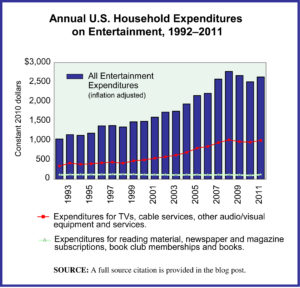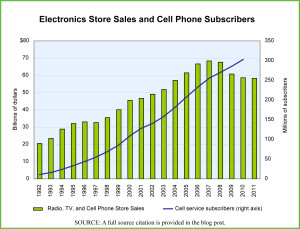
While there are many legal IPTV providers such as Sling TV, Xfinity Flex, DirecTV Now, AT&T U-verse and Zattoo, to name a few, there are also many companies that provide content they are not licensed to sell. According to a 2017 Sandvine Intelligent Broadband Networks study, 6.5% of North American households have accessed a pirated IPTV service. Pirated IPTV services were valued at $840 million per year while traditional content providers lost $4.2 billion per year due to copyright infringement. In recent years, content providers have filed lawsuits against IPTV providers that transmit unauthorized content. In 2019, Set TV NOW, with more than 180,000 subscribers, was the first major IPTV provider to shut down. The judge ordered the company to pay DISH Network Corp. more than $90 million in damages. In November 2019, police raids in Spain, Italy, the Netherlands, France, and Bulgaria shut down Xstream-codes.com, a company that provided the software that ran many IPTV systems. Its 5,000 clients, IPTV providers, served more than 50 million customers around the world. In 2020, more lawsuits against these types of companies are expected in the United States and around the world. Lawsuits against companies that make the services possible such as website hosting companies, file hosting companies, and companies that process the payments are also expected.
OTT services use the open internet to stream their video on demand content. A customer’s internet service provider treats data packets for streamed content the same as data packets for any other content sent over the internet. As a result, the quality of the viewing experience depends on the speed and quality of the customer’s internet connection. Customers need either a set-top box, “stick” device, multipurpose device like a game console that can stream video content, or a wi-fi enabled smart TV to view content on their television sets. OTT content can also be viewed on computers, tablets, and smartphones.
There are three types of OTT services: advertising-based (AVOD), transaction-based (TVOD), and subscription-based (SVOD). Advertising-based services are free to use, but customers must watch commercials like they do when they watch over-the-air, cable or satellite TV. YouTube and DailyMotion are examples of AVOD services. Transaction-based services allow users to sign up for the service for free and then the amount they pay is dependent on the content they watch. iTunes is an example of a TVOD service. Subscription-based video on demand services may be the best-known type of OTT. A user pays a monthly or yearly fee to stream an unlimited amount of video content. Netflix and Hulu are two examples of subscription-based OTT services.
Today’s market size shows the total global revenues for video on demand services for 2019 and projected for 2024. OTT services have the highest market share with subscription-based service revenue expected to grow at the highest compound annual growth rate (CAGR) over this time period. Overall, the global video on demand market is expected to grow at a CAGR of 17.5%. According to analysts, growth in this industry will be due to increasing broadband internet access globally, including access to 4G and 5G technologies, and the increasing popularity of smartphones. Services that offer a large variety of content in different genres and languages will also contribute to growth in this industry. North America is expected to account for 40% of the revenue between 2019 and 2024, with the Asia-Pacific region claiming 30%, Europe 20%, Latin America 5% and the Middle East and Africa 5%. Leading companies include Netflix, Amazon, Google, YouTube, Apple, Roku, Vudu, Hulu, Huawei, and Fujitsu among others. In the Asia-Pacific region the following companies are expected to capture most of the market share: YouTube, iQiyi, Tencent Video, Youku, ByteDance, Netflix, Amazon, Hotstar, and Hulu Japan.
Geographic reference: World
Year: 2019 and 2024
Market size: $38.4 billion and $87.1 billion, respectively
Sources: The Video on Demand (VoD) Market Size is Expected to Grow from USD 38.9 Billion in 2019 to USD 87.1 Billion by 2024, at a Compound Annual Growth Rate (CAGR) of 17.5%,” CISION PRNewswire Press Release, January 28, 2020 available online here; “2017 Global Internet Phenomena,” Sandvine Intelligent Broadband Networks, October 27, 2017 available online here; “What is IPTV? Everything Cord Cutters Need to Know,” AntennaJunkies.com available online here; Luke Bouma, “IPTV Came Under Fire in 2019 & in 2020 It Maybe All Out War,” Cord Cutters News, January 1, 2020 available online here; Luke Bouma, “Dish Officially Announces Legal Action Against Two IPTV Services,” Cord Cutters News, January 19, 2018 available online here; Ali Ahmed Awan, “Understanding the Terms SVOD, AVOD, TVOD and the Difference Between VOD and OTT,” ClipBucket, March 7, 2019 available online here; Dan Price, “The Best Legal IPTV Service Providers in 2019,” MakeUseOf, December 4, 2019 available online here;
Image source: Glenn Carstens-Peters, Unsplash, June 10, 2019 available online here.


